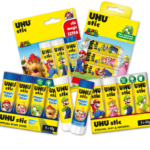Strategies in pricing for your bar or restaurant is an essential part of growing the business. Having the right pricing gives you enough profit and lets you have the right amount or more than what your customers have paid for. If your prices are too low, you could miss out on profits and when your prices are too high, you might scare away customers. Consequently, standard and right pricing is a vital system for your business to gain and attract customers even more, while also getting the payment due for what you offer them. Hence, it is a tangible value to let your customers know that it is worth their time and investment, which could also shape your profitability in the future.
Yet when luring in customers, it is also necessary to provide them with something more unique with your dishes, as customers are always bound to visit restaurants with a wide variety of choices. Thus, play, mix and experiment with your food, so your clients can also enjoy going back again to your bar or restaurant.
We have come up with tips you can use to get the best pricing, profit, and more clients coming into your foodservice business.
Tip # 1: Understand Your Food Costs
The first and the most important formula in jumpstarting your restaurant’s profitability is having the correct pricing for the food. This is where you may earn by letting clients pay unconsciously for additional costs. In doing this, you need to calculate the pricing of the food itself first. Start from the raw materials and their prices, and add them up to know the exact sum. Secondly, you must know the average food cost percentage of every food item on the menu. Typically, restaurants add a standard percentage of 25% – 35% for every food item. Others can, however, lower them to make the prices more appealing to customers. While lower-cost percentage does not sound ideal, eventually it will make more sales and gain more pure profit for the business.
To make it short, you can refer to this formula for easier citation:
Cost of raw materials / .35 or .25 = standard pricing
For example:
Cost of salad: $7.25
Standard cost percentage: .25 or .35
So…
7.25 / .25 (or .35) = $29 (or 20.71)
Tip #2: Understanding Portion Costs
In determining the right costs of raw materials when making your food, be sure to also weigh in your ingredients to determine menu prices. For instance, if you’re selling a hamburger, you have ingredients including patties, onions and pickles. Be specific in providing the correct and equal amount of ingredients per serving. This is for you to know the exact price of each dish.
You must always take into account how many servings can be used from one ingredient. For example: for one onion, if you can make 5 servings, then use this formula:
Raw materials / no. of serving per ingredient = cost
You might also want to add some percentage on each portion of the ingredient. The tactic for this one is to add higher percentages for smaller servings; trust us, your customers will not be aware of it.
Tip #3: Add Some Cents
Doing standard pricing for the cost of products might be enough, but adding a few more cents to them does no damage.
For instance, if you had a hamburger that costs $3.75 you may make the price a little higher at $3.95 or $3.99. Studies show that knocking off a few cents for a product shows more “value” to the customer, making them believe that they are getting more of what they are paying for. Thus, more profit for your business by the end-of-day without even letting your client notice.
Tip #4: Food Variations
Varieties in food choices for the customers are great to drive customers to your business. Having a wide range of food gives them the notion that your bar or restaurant is a one-stop shop, letting them feel like they could go to your business all over again without getting bored with your products.
If you have a hamburger on your menu, you can tweak the recipe for next-level dine-in. You may have an all-beef burger, an all-seafood burger and you may even want to have vegan choices instead. This will attract many types of clients for better sales and more profit for your business.
Tip #5: Enhance the Look of Your Menu
Aside from the ambience and the service your customers are enjoying when visiting your food and beverage business, one thing that they also want to see is how well organized and styled your menu appears. In other words, fonts on menus can also be particular, as the clients tend to observe and perceive how neat and concise everything is in your business.
For this, use formal and simpler fonts in your menu. The plain fonts are very appealing to the eyes, making your customers see your menu straightforward (even have them pick food right away and let them stay at your restaurant for a short amount of time to give more space for newcomers). Some studies also suggest using italicized fonts for higher-priced dishes to emphasize greater quality.
Tip #6: Be Detailed in Your Menu
Descriptive menus are omnipresent elements in restaurant menus. Customers are always drawn with nostalgic, sensory, and brand description that draws their attention even more with the use of specifics in food. According to Virginia Tech research, food description is a key factor to food perception so clients would know the specifics of what they are indulging in.
You may also want to add a few pictures of the food your business is offering and make it look appetizing so customers instantly know what they are getting. Other studies also show that concrete food descriptions in menus can boost sales up to 27%.
Nevertheless, it is great to be wordy to serve your clients their anticipated satisfaction.
Tip #7: Locations are essential
To better up your profits and make more clients come through your foodservice business, you also need to come to terms with the location of where your restaurants are operating. Demographics must be considered for this, so you’ll be able to cater to the varying needs of the market you are targeting.
Suburbs can be good for smaller restaurants. You must also take into account that the products you are selling should not be too pricey, as people living in the suburbs are practical especially when it comes to food. Nevertheless, if you have a lavish restaurant that is more centred on fine dining, the city area is the best option for you. If you are planning to have a bar in your area, you should ask yourself, “Are the people in this area a fan of beer, or are they more into wine?”. With this, you’ll be able to attract potential consumers even more.
The Theory of Agglomeration also explains that you must put your business in an area where you have the same competitors; close linkages to the same types of business are more visited by customers, as they will know that a certain area provides a service or product they are looking for.
Tip #8: Study your competitors
Strategies in pricing must also involve knowing the pricing of your competitors. Studying your rivals’ food costs can help you to challenge them with lower prices (people often choose the same food for a cheaper price). In this way, you can charge similar dishes with affordable prices compared to your competitors, and that way your target market will likely choose your business over the others.
That’s how you get them!
Tip #9: Prepare for market fluctuations
Pricing in raw materials can often rise or drop. As inflation is always constant, prices and changes in food must be adjusted accordingly.
To know when you will change the food prices and adjust your menu, be mindful of the fluctuations of raw materials. For example, if poultry products are higher than last year, you must change your menu with more food that will involve fewer poultry products. However, if the market prices drop otherwise, then it’s time to boost up your menu and offer a variety of poultry-based food.
Thus, playing and seeing your menu prices on a deeper scope is crucial to know what to tweak to beat higher values for the food and drinks you are providing.
Tip #10: Discounts can be good
Discounted prices on your menu can be the key to attracting customers. People will have a sense of urgency to visit your place, as discounts are only available for a short period of time; if they don’t buy the product right now, they will have to pay more for it later. However, be careful with discounting as you don’t want to cheapen your image.
Keep in mind to be constructive with your wordings. The “Get $ off” is often correlated with achieving, whereas “Save $” often pertains to avoiding a loss. In most studies, the former is always better than the latter and attracts consumers to buy your products even more. You can even use, “Free (product)” on items that cost less on your menu.
In most food businesses, strategic planning for prices is one of the main factors so your business can profit more. It’s an essential part to gather up sales, so your target market will not regret going to your business over and over again. Always study market values, demographics, and competitors to achieve gains for your bars or restaurants, and you’ll be surprised how your business’s net worth will increase as you go while being mindful of your pricing.





